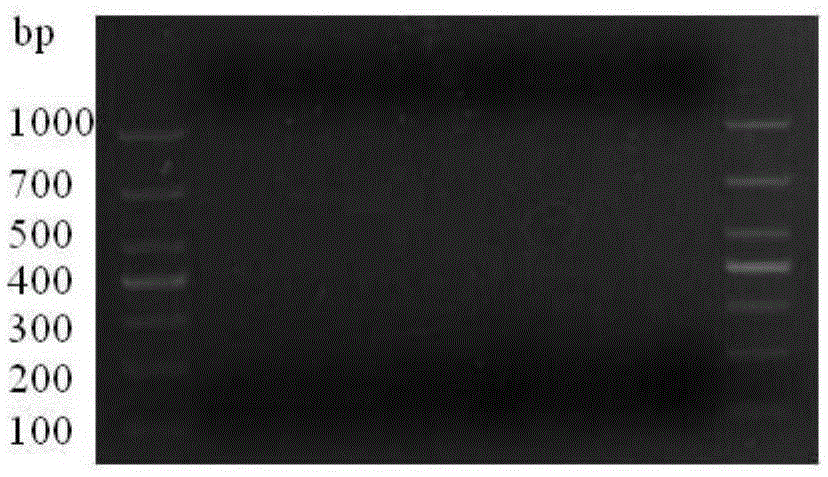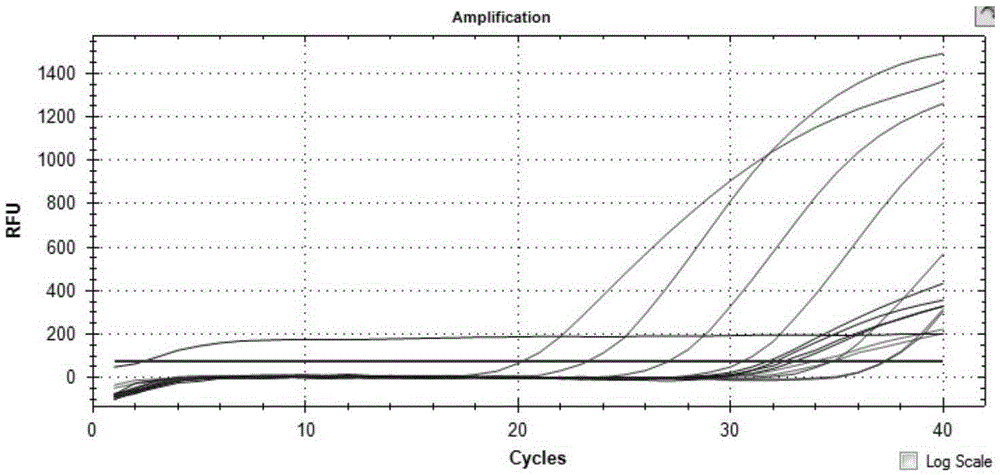Method for detecting TCK (Tilletia controversa Kuhn) in soil through QPCR (quantitative polymerase chain reaction)
A technology of Tilletia dwarf and soil, which is applied in biochemical equipment and methods, microbial measurement/inspection, DNA preparation, etc. It can solve the problems of small volume and quality, false negative results, low ratio, etc., and achieve optimized reaction procedures , reduce economic losses, optimize the effect of the reaction system
- Summary
- Abstract
- Description
- Claims
- Application Information
AI Technical Summary
Problems solved by technology
Method used
Image
Examples
Embodiment 1
[0049] Embodiment 1. adopts the inventive method to detect the teliospore of wheat dwarf triticum teliospore in soil
[0050] Pretreatment of soil samples:
[0051] Pass the collected 25 fresh soil samples through a 40-mesh sieve, put them into small ziplock bags, and write the sampling location, the type of wheat planted, the period and sampling time on each ziplock bag, and put them in a -20°C refrigerator overnight. Before extracting DNA, take the frozen soil sample out of the refrigerator, weigh 0.5g of the soil sample and place it in 2ml LysingMatrixETube (containing grinding beads), and then use a cell shaker to vibrate at 6.5M / S for 2 minutes.
[0052] 1. Using FastDNA TM SPINKitforSoil kit, follow the optimized steps below to extract total DNA from soil samples:
[0053] (a) Weigh 500mg of soil and add it to LysingMatrixETube;
[0054] (b) add 978ulsodiumPhosphateBuffer to the tube;
[0055] (c) Add 122ulMTBuffer;
[0056] (d) Put the added LysingMatrixETube into...
PUM
 Login to View More
Login to View More Abstract
Description
Claims
Application Information
 Login to View More
Login to View More - R&D Engineer
- R&D Manager
- IP Professional
- Industry Leading Data Capabilities
- Powerful AI technology
- Patent DNA Extraction
Browse by: Latest US Patents, China's latest patents, Technical Efficacy Thesaurus, Application Domain, Technology Topic, Popular Technical Reports.
© 2024 PatSnap. All rights reserved.Legal|Privacy policy|Modern Slavery Act Transparency Statement|Sitemap|About US| Contact US: help@patsnap.com










